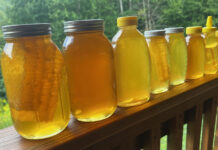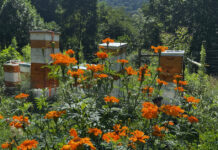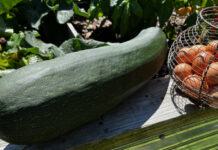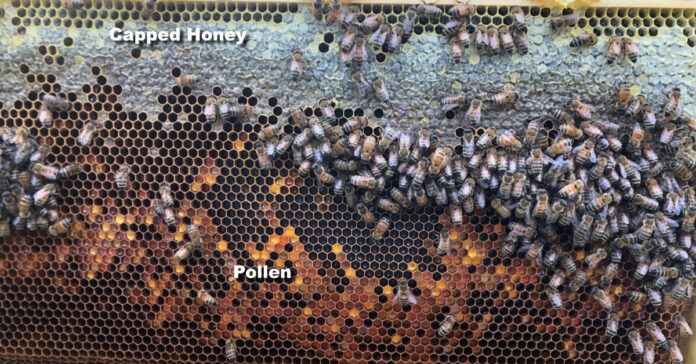
We received more than 2.5 inches of rain over the weekend. Thankfully, the rain spread out over two days, with only two torrential downpours mixed in. The rest of the time it was a good, solid rain with a few breaks in which to walk the dog. It also ruined many a Labor Day picnic.
When things cleared up, I opened the beehives to start prepping them for winter. The large number of bees are in the hives surprised me, as did the amount of pollen and nectar they had saved up.
For those of you who are not familiar with how bees over winter, let me explain.
Wanted: Fat Winter Bees
The queen bee is the only been in the hive that lives for several years. None of the bees that made this summer’s honey will live to see the winter because the normal lifespan of a worker bee is about 42 days. This allows the number of bees in a hive to grow when there is a great deal of nectar to be harvested and to shrink when there is less. While letting bees die may sound like a waste of bees, one thing a successful beekeeper must learn early is that the importance of the hive–the super organism–is what matters, not the life of an individual bee.
As the days grow shorter and the food resources dry up, the queen stops laying normal worker bees and lays what are known as fat-bodied winter bees. These special bees are unlike regular worker bees in that they live longer than six weeks and can use their resources (that’s the fat-body part) to feed the eggs and larvae the hive needs as it rebuilds in the spring.
During the cold weather, they huddle together in a large ball to keep the queen warm and keep any brood warm. During the winter, the size of the nest, that ball of bees, shrinks. The trick for the bees is to keep the temperatures up high enough using their body heat to keep the hive alive.
To raise good, strong winter bees, you want the generation or two before them to be healthy and well fed. You want the hive to have plenty of resources so it will produce healthy, chubby winter bees. I will achieve that by making sure my bees are mite free and well fed.
Mite Counts
During my recent hive inspections, I did mite counts on four of the hives. I got counts of 5, 5, 8 and 16. Since count is on a sample of 300 bees, this works out to two hives with 1.67 percent, one with 2.67, and one with just over five percent. While only the five percent number is getting to be problematic, as the size of the hive shrinks, as I mentioned above, the number of mites doesn’t. That results in an increase in the percentage of bees infested with mites.
As a result, I treated all my hives. (If you don’t treat them all, then mites from the untreated hives can spread back to the treated hives.)
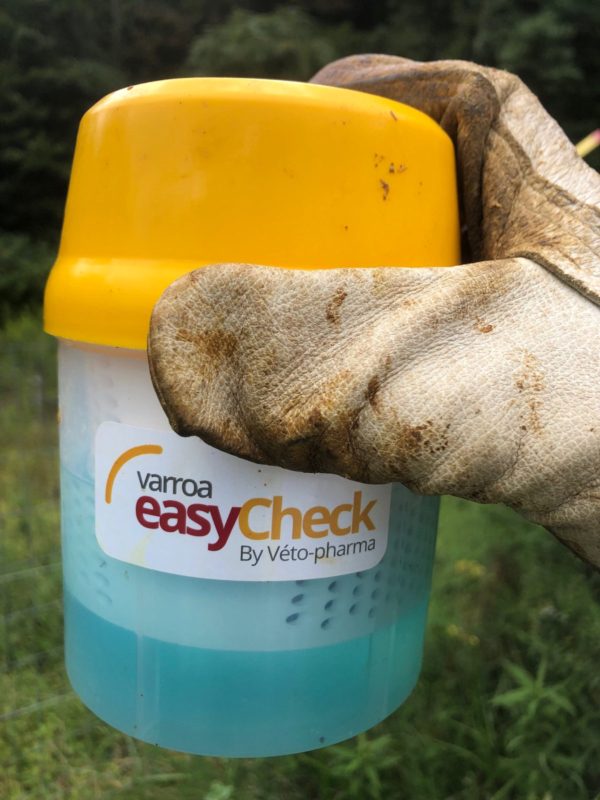
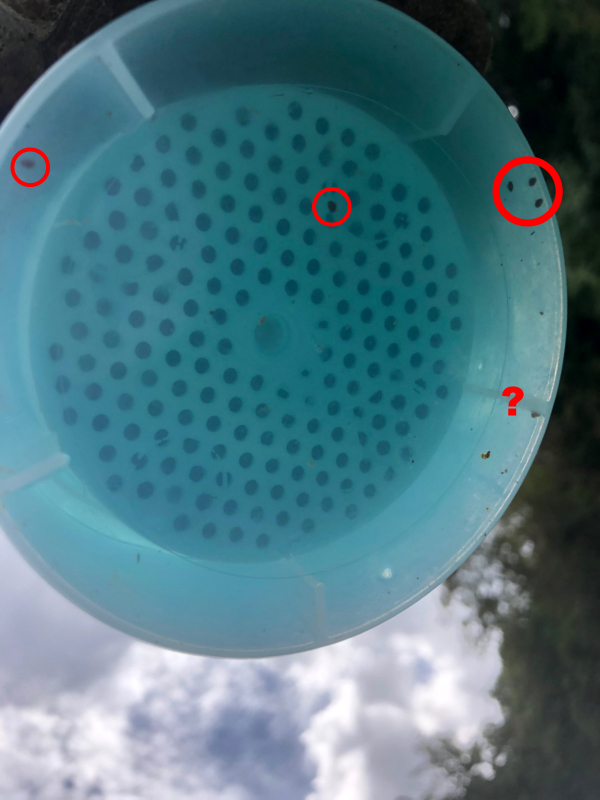
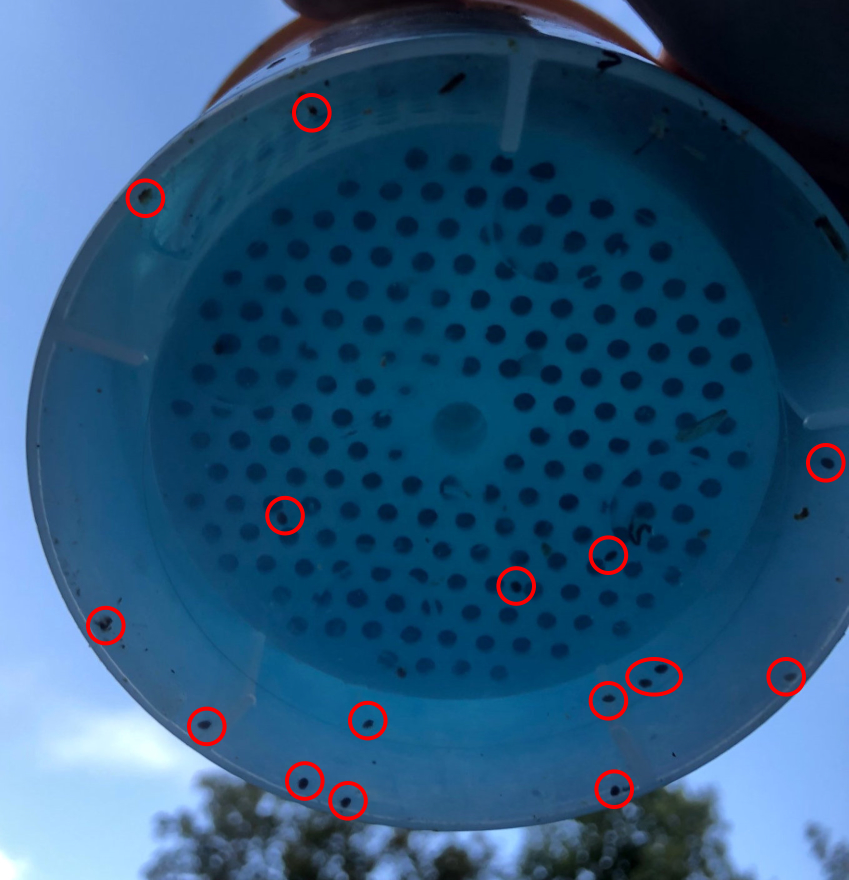
Mite Treatment
I have three treatment options on hand: Formic Pro, Apivar, and oxalic acid. I decided to skip Formic Pro because I used it this spring, and I don’t want the mites to build up resistance. Also, you should not feed your bees with an in-hive feeder while using formic acid, and there’s a good possibility that I will feed my bees in the coming weeks.
I am planning to use oxalic acid in December when the brood nest is small or non-existent. Under the current label, it is not optimal for hives with capped brood because the vapor doesn’t penetrate the capping. So I am holding off on OA for now.
I decided to use the Apivar, which comes in strips. I hung the strips in the brood box, and when the bees walk over the strip or brush against it, the active ingredient will kill the mites. The treatment will last for six weeks, so I should have very low mite counts well into November. I should note that using Apivar does not interfere with feeding, and I do not have any supers on my boxes, so I will not expose the wax that holds the honey to the Apivar.
Next Steps
Right now there is still enough pollen coming into the hive (see the main image) that I don’t need to feed the bees. Within a few weeks, I expect to put the in-hive feeders to work and put a pollen patty inside to provide protein.
Once the temperatures head into freezing, I’ll wrap the hives in tarpaper as I did last year. This not only will cut down on the wind, but the black gets warm on sunny winter days. I also plan to check that each hive is tilted slightly forward, so any condensation that runs down the walls will drain out the front.
Garden Harvest
We are continuing to get at least two or three yellow squash and zucchini from the garden every week. One of the zucchinis was so well hidden it was 4.5 inches in diameter by the time we spotted it. We tried it, but it was well past its tender prime, so I cut it up and fed it to the chickens over the course of two days. I wonder if they are tiring of zucchini, too?
Both the zucchini and squash continue to bloom, so the harvest should continue for some time. I believe I’ve eaten yellow squash three times and zucchini at least once in the past week. We are running out of people to give them to. It seems like half the county raises their own. We dehydrated some for use this winter.
The Swiss chard continues to feed my wife and the chickens, and we just had home-grown potatoes at yet another meal. Even our tomato plant, which we ignore, has three new tomatoes on it. So while I am sticking to my earlier declaration that raising enough food to feed your family is difficult and requires quite a bit of land, raising enough vegetables to enhance your meals during the summer is a far easier goal. My plan next year is to at least double our harvest.
If you are at all worried about the current potato shortage, you can relax. The current shortage is apparently caused by last year’s poor harvest. The bulk of this year’s Idaho potatoes are still in the ground. While the crop is not all one could hope for, it is reportedly bigger than last year. So while you may see a shortage of turkey at Thanksgiving, there should be plenty of potatoes available by then.

